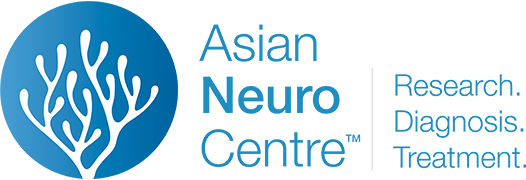- Have any questions?
- 911 12345 29
- info@asianneurocentre.com
Every headache is not Migraine

Cluster Headaches – Symptoms and Causes
July 3, 2021
Don’t Allow Migraine To Become Headache of Life
July 10, 2021When there is pressure or pain in your head, it can be difficult to tell whether you are experiencing a typical headache or a migraine. Differentiating a migraine headache from a traditional headache, and vice versa, is important. It can mean faster relief through better treatments. It can also help prevent future headaches from occurring in the first place. So, how can you tell the difference between a common headache and a migraine?
What is a headache?
Headaches are unpleasant pains in your head that can cause pressure and aching. The pain can range from mild to severe, and they usually occur on both sides of your head. Some specific areas where headaches can occur include the forehead, temples, and back of the neck. A headache can last anywhere from 30 minutes to a week. According to the Dr Navin Tiwari, the most common headache type is a tension headache. Triggers for this headache type include stress, muscle strain, and anxiety.
Tension headaches aren’t the only type of headache; other headache types include:
What is migraine?
These headaches are intense or severe and often have other symptoms in addition to head pain. Symptoms associated with a migraine headache include:
- nausea
- pain behind one eye or ear
- pain in the temples
- seeing spots or flashing lights
- sensitivity to light and/or sound
- temporary vision loss
- vomiting
When compared with tension or other headache types, migraine headache pain can be moderate to severe. Some people may experience headaches so severe they seek care at an emergency room. Migraine headaches will typically affect only one side of the head. However, it is possible to have a migraine headache that affects both sides of the head. Other differences include the pain’s quality: A migraine headache will cause intense pain that may be throbbing and will make performing daily tasks very difficult.
The sensations typically occur anywhere from 10 to 30 minutes before an attack. These can include:
- feeling less mentally alert or having trouble thinking
- seeing flashing lights or unusual lines
- feeling tingling or numbness in the face or hands
- having an unusual sense of smell, taste, or touch
Some migraine sufferers may experience symptoms a day or two before the actual migraine occurs. Known as the “prodrome” phase, these subtler signs can include:
- constipation
- depression
- frequent yawning
- irritability
- neck stiffness
- unusual food cravings

Diagnosis
Effective treatments for headache disorders require timely and accurate diagnoses. Unfortunately, accurately diagnosing headache disorders presents a significant challenge for individuals and their doctors.
A doctor can diagnose headache disorders, including migraine, based on an individual’s symptoms and medical and family history.
They may refer a person to a neurologist, who specializes in nervous system disorders.
Triggers
People with migraine or another headache disorder might notice that certain things trigger their symptoms.
Triggers vary from person to person, and they can include anything from environmental changes to specific foods.
Other migraine triggers may include:
- stress
- depression or anxiety
- hormonal changes
- lack of sleep
- hunger
- alcohol consumption
When to see a doctor
People should also seek medical care if their headaches cause any of the following symptoms:
- nausea
- vomiting
- vision problems
- tingling or numbness in the limbs, face, neck, or head
- difficulty speaking or understanding what other people say
- difficulty thinking
- difficulty moving one side of the bodyMost people will experience a headache at one point in their lives. Not all headaches are the same, as they range in severity, frequency, and cause.If you experience any of these symptoms visit Dr. Navin Tiwari in Asianneuro center.Headache disorders can significantly impact a person’s ability to function and reduce their overall quality of life. This is why accurate diagnoses are so important.

